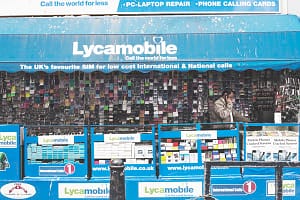Global disruptions, rising customer expectations, and increasing competition have put immense pressure on modern supply chains. Companies must optimise efficiency to survive in this environment. Yet hidden bottlenecks continue to lurk within supply chain operations, constraining productivity and performance. Identifying and alleviating these pain points provides an opportunity to unlock major improvements. Supply chain optimisation should be a top priority. In this article, we will examine the importance of supply chain optimisation, discuss methods for finding bottlenecks, and provide strategies for alleviating them.
The value of supply chain optimisation
The supply chain refers to the network of people, processes, and resources involved in moving products from suppliers to consumers. It encompasses everything from sourcing raw materials to manufacturing, warehousing, and final delivery. Optimising this complex system is crucial for business success. Supply chain optimisation can lead to:
- Reduced costs through improved efficiency
- Faster delivery times and increased responsiveness
- Higher quality and consistency through streamlined processes
- Enhanced visibility and control over operations
- Increased sustainability through the elimination of waste
For these reasons, companies are making supply chain optimisation a top priority. Research shows that effective optimisation efforts can reduce supply chain costs by 5-25%. This goes straight to the bottom line as increased profit.
Methods for identifying bottlenecks
The first step in optimising supply chain efficiency is to identify areas of underperformance. Bottlenecks are constraints that limit throughput and cause delays. Here are some methods for locating bottlenecks:
SWOT analysis
A SWOT analysis examines the strengths, weaknesses, opportunities and threats impacting supply chain operations. This high-level perspective can reveal problem areas for further investigation. Check out this SWOT analysis example to understand how it works.
Data analysis
Supply chain analytics tools can mine performance data to detect bottlenecks. Key data to analyse include inventory levels, delivery times, quality control failures, and capacity utilisation rates. Abnormal measurements indicate an area to address. Dashboards and data visualisation can help highlight problem spots.
Value stream mapping
This visual method maps out each step in the supply chain. Longer lead times between particular steps highlight bottlenecks. Value stream mapping displays wasteful activities and opportunities to streamline. Observing the flow of materials helps identify constraints.
Observation
Walk through supply chain facilities and observe operations firsthand. Bottlenecks will be visually apparent as points where work piles up. Pay attention to any idle or frustrated workers or equipment. Note where handoffs between teams seem problematic.
Asking questions
Discuss supply chain processes with team members working directly in operations. Frontline insights will help identify pain points that data alone may miss. Gather perspectives from multiple roles across the chain.
Customer feedback analysis
Analyse customer satisfaction surveys, complaints, and other feedback. This can reveal supply chain issues that frustrate buyers and damage customer experience. Their outside view shines light on problem areas.
Strategies to alleviate bottlenecks
Once companies locate supply chain bottlenecks, a variety of strategies can help alleviate them:
- Process improvement – Lean tools like Six Sigma and Kaizen eliminate waste within processes. Streamlining steps speeds up throughput.
- Additional resources – Bottlenecks often result from insufficient resources. Adding staff, equipment, facilities or inventory can reduce constraints.
- Technology implementation – Automation, sensors, and supply chain management software improve visibility and oversight to prevent future bottlenecks.
- Supplier integration – Collaborating more closely with suppliers improves coordination and flexibility in responding to materials shortages or delays.
- Demand management – Smoothing ordering patterns reduces spikes in demand that can overwhelm capacity at certain points.
- Relocation of facilities – Shifting storage locations closer to distributors, ports, or raw materials alleviates transportation bottlenecks.
- Outsourcing – Third-party logistics providers (3PLs) can supplement in-house capabilities and flexibly meet demand fluctuations.
- Contingency plans – Scenario analysis helps identify potential bottlenecks and prepare backup options if disruptions occur.
Bottleneck management is ongoing
It’s important to view supply chain optimisation as an ongoing process rather than a one-time initiative. Continuous improvement requires regularly re-evaluating and addressing bottlenecks as conditions change. Utilising key technologies for B2B e-commerce also enhances visibility and coordination across suppliers, distributors, and customers. Maintaining an optimised supply chain maximises efficiency while allowing flexibility to meet evolving market demands.
Forming a bottleneck prevention team
Appointing a dedicated team helps institutionalise efforts to prevent bottlenecks. Their responsibilities could include:
- Conducting bottleneck audits using various identification techniques
- Tracking key performance indicators related to potential constraints
- Analysing data and customer feedback to detect problem signs
- Developing preventative measures and alternative options
- Educating staff on bottleneck prevention principles
- Facilitating communication between teams to quickly address issues
With an empowered team leading the charge, organisations can embed supply chain optimisation into everyday operations.
Supply chain bottlenecks can significantly hinder business performance if left unaddressed. By taking a proactive approach to identifying constraints and alleviating them through targeted strategies, companies can realise tremendous savings, improve productivity, and better satisfy customers.






Leave a Comment